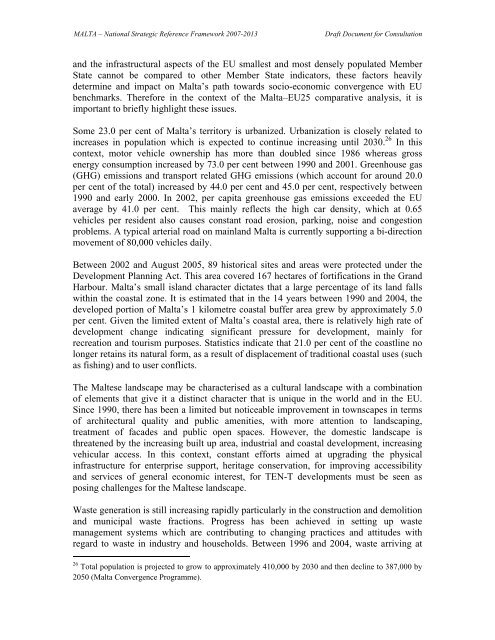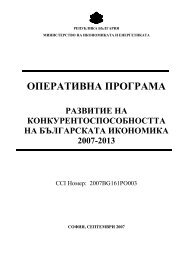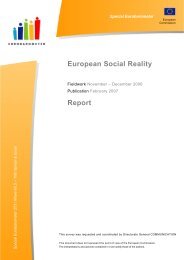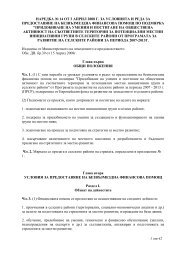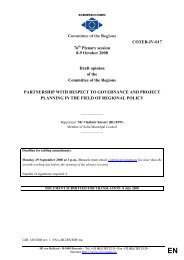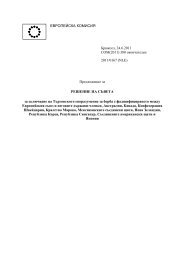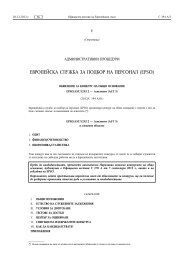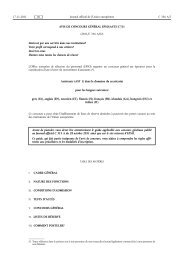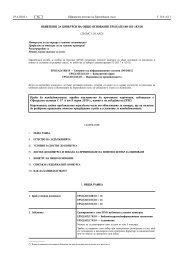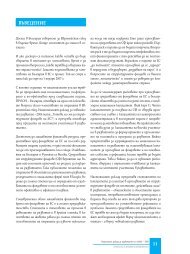National Strategic Reference Framework
National Strategic Reference Framework
National Strategic Reference Framework
Create successful ePaper yourself
Turn your PDF publications into a flip-book with our unique Google optimized e-Paper software.
MALTA – <strong>National</strong> <strong>Strategic</strong> <strong>Reference</strong> <strong>Framework</strong> 2007-2013 Draft Document for Consultation<br />
and the infrastructural aspects of the EU smallest and most densely populated Member<br />
State cannot be compared to other Member State indicators, these factors heavily<br />
determine and impact on Malta’s path towards socio-economic convergence with EU<br />
benchmarks. Therefore in the context of the Malta–EU25 comparative analysis, it is<br />
important to briefly highlight these issues.<br />
Some 23.0 per cent of Malta’s territory is urbanized. Urbanization is closely related to<br />
increases in population which is expected to continue increasing until 2030. 26 In this<br />
context, motor vehicle ownership has more than doubled since 1986 whereas gross<br />
energy consumption increased by 73.0 per cent between 1990 and 2001. Greenhouse gas<br />
(GHG) emissions and transport related GHG emissions (which account for around 20.0<br />
per cent of the total) increased by 44.0 per cent and 45.0 per cent, respectively between<br />
1990 and early 2000. In 2002, per capita greenhouse gas emissions exceeded the EU<br />
average by 41.0 per cent. This mainly reflects the high car density, which at 0.65<br />
vehicles per resident also causes constant road erosion, parking, noise and congestion<br />
problems. A typical arterial road on mainland Malta is currently supporting a bi-direction<br />
movement of 80,000 vehicles daily.<br />
Between 2002 and August 2005, 89 historical sites and areas were protected under the<br />
Development Planning Act. This area covered 167 hectares of fortifications in the Grand<br />
Harbour. Malta’s small island character dictates that a large percentage of its land falls<br />
within the coastal zone. It is estimated that in the 14 years between 1990 and 2004, the<br />
developed portion of Malta’s 1 kilometre coastal buffer area grew by approximately 5.0<br />
per cent. Given the limited extent of Malta’s coastal area, there is relatively high rate of<br />
development change indicating significant pressure for development, mainly for<br />
recreation and tourism purposes. Statistics indicate that 21.0 per cent of the coastline no<br />
longer retains its natural form, as a result of displacement of traditional coastal uses (such<br />
as fishing) and to user conflicts.<br />
The Maltese landscape may be characterised as a cultural landscape with a combination<br />
of elements that give it a distinct character that is unique in the world and in the EU.<br />
Since 1990, there has been a limited but noticeable improvement in townscapes in terms<br />
of architectural quality and public amenities, with more attention to landscaping,<br />
treatment of facades and public open spaces. However, the domestic landscape is<br />
threatened by the increasing built up area, industrial and coastal development, increasing<br />
vehicular access. In this context, constant efforts aimed at upgrading the physical<br />
infrastructure for enterprise support, heritage conservation, for improving accessibility<br />
and services of general economic interest, for TEN-T developments must be seen as<br />
posing challenges for the Maltese landscape.<br />
Waste generation is still increasing rapidly particularly in the construction and demolition<br />
and municipal waste fractions. Progress has been achieved in setting up waste<br />
management systems which are contributing to changing practices and attitudes with<br />
regard to waste in industry and households. Between 1996 and 2004, waste arriving at<br />
26 Total population is projected to grow to approximately 410,000 by 2030 and then decline to 387,000 by<br />
2050 (Malta Convergence Programme).


